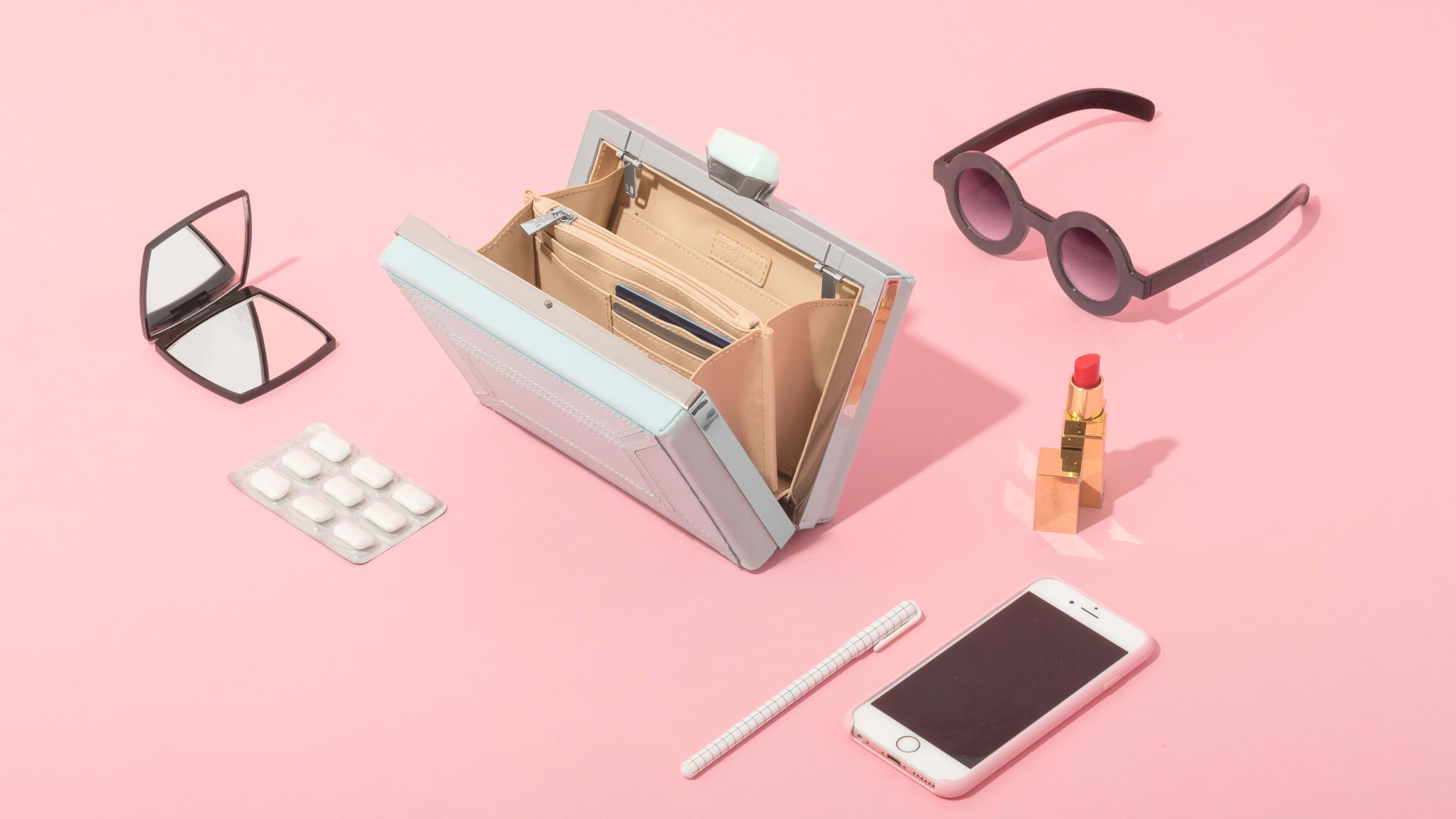As a nanotechnology engineer, Eliana Ghantous is always mentally deconstructing the items she sees around her, thinking about their fundamental parts. Working at a lab co-owned by Boeing and General Motors, she was tasked with developing the smallest parts of big machines, like sealants for fuel tanks and tiny magnets for cars. So it’s no surprise that whenever Ghantous picked up a clutch to go to a wedding or party, the wheels in her brain began to pick the bag apart, thinking about its components.
“A clutch is something that you don’t carry all the time,” Ghantous says. “So it doesn’t make sense to have 15 different versions in your closet.”
While some might argue that building a better purse isn’t on the same scale as, say, improving how an aircraft functions, Ghantous felt passionately that handbags are an integral part of women’s daily lives, and improving their design would be a good use of her talents. So she set out to tackle the humble clutch bag, an accessory that was first invented in the 1930s so women could carry their lipstick and gloves to an event.
Ghantous assembled a dream team of expert scientists, including her husband, Sami Ghantous, an engineer who focuses on battery storage, and industrial engineer Liz Daily, who designs products with high-tech fabrics. Together, they launched the startup Modjewel–a play on the word “module”–and their very first product is a modular clutch bag.
The bag is a $198 rectangular metal clutch that comes with a strap. It’s got a vintage feel, with a geometric design, and is exactly the kind of bag you might bring to a fancy event. However, Ghantous says that it is designed to be functional enough to use every day, with enough space for an iPhone 8+, plus pockets for credit cards and makeup. Each part of the bag can be customized. You can swap out the front and back covers with a range of different leathers that cost between $40 and $48. You can also buy top clasps for $28 and pick different straps for $38.
While a full set of components is pricey, around $352, each component is made from high-quality, long-lasting materials, like leather and strong weight-bearing metals. And since the bag can be easily adapted to outfits for different occasions–from a wedding to a gala to a date–women might save money by not needing to invest in a new bag for every occasion. Ghantous says that, in theory, a woman would only need one of these to get her through the many events in her life.
In the shoe industry, several brands are tinkering with modular design. Earlier this year, I wrote about a shoe brand, Alterre, that allows you to swap out different parts of a shoe for new looks. Another brand, Shooz, has developed a modular travel shoe. And Ki ecobe uses modular design to customize sneakers in more than 10,000 ways.

Whether or not modular design is actually a workable solution all comes down to execution, Ghantous says. The different components need to be able to fit into one another quickly and effectively. “If you have to spend a long time changing the covers of the clutch, or if it doesn’t fit together in a solid way, we haven’t really solved the problem at all,” Ghantous says.
The three engineers who worked on this bag focused on the small details. The sides of the clutch pop out easily and you can stretch out the leather covers, attaching them firmly with velcro. The clasp slides into the top easily. And the straps are attached with a clasp that allows it to hang nicely, without getting tangled. When I tested the product, I found that it didn’t take long to assemble, and that each component stayed in place. It didn’t look like it was pieced together.
Developing the clutch took years of prototyping. As a material scientist, Ghantous looked at all the latest materials on the market, all the way down to the various adhesives necessary to attach one part to another. The team now has a patent-pending system. But they’re also looking to expand beyond the silhouette of the clutch. Next up, they’re looking to apply the same design to an everyday handbag.
“In the future, I could see a world where women just have two or three handbags in their closet that miraculously transform from event to event, or from season to season,” Ghantous says.
Recognize your brand’s excellence by applying to this year’s Brands That Matter Awards before the early-rate deadline, May 3.
